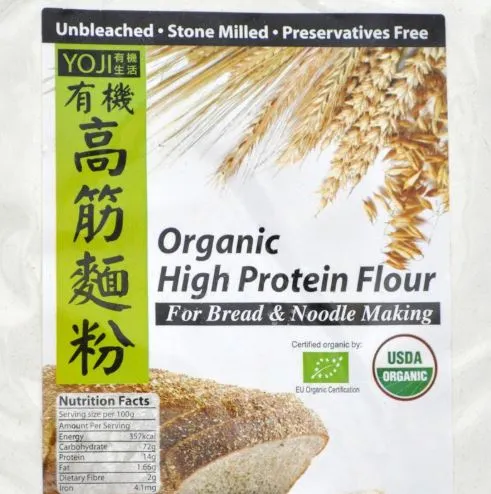
I recently purchased some flour that allegedly has 14% protein. Presumably, this should yield a pretty strong dough and great gluten development but upon using it, I was hugely disappointed. Initially, I tried mixing with a Kitchen Aid. The dough was over-mixed way sooner than what I'm used to. Then I tried preparing a high hydration dough (80% hydration) and hand mixed the dough. The dough had a sloppy consistency even after the autolyse. The gluten network was so weak that every time I tried to do a coil fold (Even on the first and second fold), the surface membrane would tear. The windowpane was extremely weak.
I did an experiment to figure out what the issue was by preparing a very stiff dough (50% hydration). I was able to do a pretty decent windowpane but it was still quite weak. The gluten in this flour just doesn't have the extensibility that I've seen in other bread flours.
What do you think the issue could be? Have I been scammed? Maybe this flour was spiked with something else? Maybe this flour is just super hydrated? I'm thinking this might be it since I live in a VERY humid environment. Then again, other flours I've purchased have never given me problems like this one has.
Any input is much appreciated! Thanks!
If that is whole wheat, then it is getting some of the protein from the germ. The protein in the germ does not make gluten. Only protein in the endosperm makes gluten.
Does the package say where it was grown? Was it past expiration date?
Is there anything in it besides wheat flour?
Unfortunately, the label doesn't state that, which is kinda sketchy. The flour is a product of Turkey and no, it's pretty fresh. The expiration is October next year.
It's product of Turkey, which is the origin country for the ancestor of today's hard wheat varieties, so it should be right. Since it's clearly not right, maybe they messed up in the packaging plant and you got soft wheat. I'd just use it up in pastry and muffins and cakes.
Yeah, it's from Turkey. I just find it kinda odd that at a low hydration, it seems to hold up quit well. I was actually able to stretch is to a single layer of gluten. The gluten wasn't very extensible though. At higher hydration, it doesn't form the cohesive mass like you would expect. The whole thing just spreads a part like an over-fermented sourdough or over-mixed dough. I actually tried a higher hydration again today and over-mixed it again. That's the only thing that's been throwing me off. I'm still able to bake bread with it but I have to mix and work the dough by hand. I guess it'll be a good learning experience. When I'm able to get my hands on better flour, I'll be able to handle the dough a lot better.
North America and Europe are the places best known for producing good _bread flour_ as in loaf breads. Though wheat is certainly grown throughout the world.
Where wheat is believed to have originated, in the Middle East, most wheat goes to making flat breads. And loaf breads are just not as popular or widely consumed in places such as Asia, and the Indian sub-continent.
(Australia produces wheat, but the milling and mixing of it can be different than North America.)
If you want to see enough numbers and technical info to make your head spin, check out this page:
http://www.theartisan.net/Flours_One.htm
That page educated me to a lot more about wheat flour than the protein percent. There are other attributes/qualities that we might assume are directly related to protein, but are not, such as elasticity, strength, mixing tolerance, water absorption, enzymatic activity. These have to do with all of: the variety/strain of wheat, the mix of various varieties/strains, and the milling methods.
i also found these two flour mills' web sites to be educational: Caputo (mill in Italy): www.mulinocaputo.it/en/flour Click on each product to see more description and numbers. Central Milling (Utah): www.centralmilling.com/store Click on each product, then click on product specs tab.My conclusion is "flour is not the same flour all over the world."